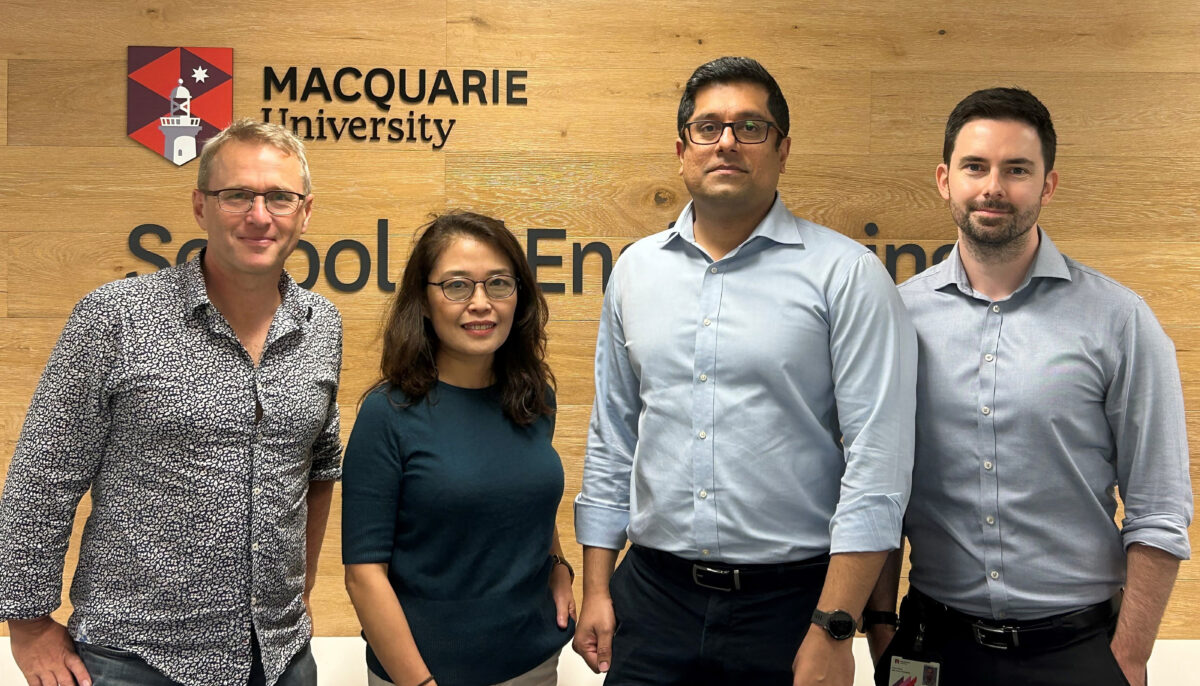A team of researchers at Macquarie University have developed a microwave technology they say will improve the production of solar cells, while making them easier to recycle.
During the fabrication of solar panels, silicon goes through several high-temperature processes known as annealing. Currently the cells are cooked in an oven. But in a recent paper in Applied Physics Letters, a team led by senior lecturer Binesh P Veettil show that heating with microwave radiation is nearly as efficient, while saving considerable time and energy and offering other advantages.
Microwave radiation selectively heats silicon, leading to almost instantaneous effects with massive savings of energy, said the researchers.
“The microwave annealing of semiconductor devices has not been extensively researched and is rarely utilized in industry, yet it has the potential to significantly reduce the time and cost associated with large-volume semiconductor processing, such as the various heating and annealing processes required in the manufacture of photovoltaic modules,” wrote the researchers.
The paper describes microwave annealing of silicon solar cells, the effective passivation of light-induced defects, and a reduction in light-induced degradation. The researchers found that silicon solar cells are heated rapidly in a microwave field and that effective boron-oxygen defect passivation can be achieved by microwave processing in less than two seconds. Microwave annealing yields similar results as compared to rapid thermal annealing, they found.
The use of microwave radiation leaves the rest of the laminated panel of glass, plastic and aluminium largely unaffected. That property has led to an unexpected recycling benefit, for which the group has a patent pending.
The microwave treatment softens the plastic (ethylene vinyl acetate) coating that protects the silicon plate from moisture and contamination, making it possible to peel it off mechanically. The plate can therefore be easily delaminated and its components reused without employing harsh chemicals.
“Until now it made economic sense to just dump the panels in the landfill,” Veettil said. “In the rare instances when they are recycled, you crush the panels, heat them to about 1,400 C and wash them with chemicals to remove the plastic – a highly energy-demanding process. But now, as the solar panels which began to be installed in vast numbers about 20 to 30 years ago are reaching the end of their life and being decommissioned, governments are demanding they be recycled.”
Other advantages offered by microwave annealing include the ability to focus microwave radiation. The heating it induces can be selective and highly tuned. The researchers note, for example, that better-directed annealing is highly advantageous in newer panels that feature heterojunction technology, in which crystalline and amorphous silicon are interleaved.
“Precise focusing also means that annealing can be directed to specific parts of the solar panel, making it ideal for annealing solar panels with more intricate internal structures fabricated for special purposes,” the team adds.
In contrast to an oven, in which all kinds of chemical substances are shed from the walls, microwave annealing takes place in a clean environment. “So there is less contamination,” Veettil explained. “And the whole process can all be undertaken at room temperature.”
There are several other projects involving solar cells and sustainable energy underway at Macquarie. One of the co-authors of the annealing paper, Shujuan Huang, leads a group examining microwave annealing in perovskite solar cells. In this case, microwave radiation produced more efficient solar cells compared to conventional annealing methods, but the reason is not clear. The researchers are currently looking to solve that mystery.
Veettil’s research in collaboration with the school of photovoltaics at the University of New South Wales in Sydney, was initiated with funding from the Australian Centre for Advanced Photovoltaics and further supported by the Australian government through the Australian Renewable Energy Agency.
This content is protected by copyright and may not be reused. If you want to cooperate with us and would like to reuse some of our content, please contact: editors@pv-magazine.com.








1 comment
By submitting this form you agree to pv magazine using your data for the purposes of publishing your comment.
Your personal data will only be disclosed or otherwise transmitted to third parties for the purposes of spam filtering or if this is necessary for technical maintenance of the website. Any other transfer to third parties will not take place unless this is justified on the basis of applicable data protection regulations or if pv magazine is legally obliged to do so.
You may revoke this consent at any time with effect for the future, in which case your personal data will be deleted immediately. Otherwise, your data will be deleted if pv magazine has processed your request or the purpose of data storage is fulfilled.
Further information on data privacy can be found in our Data Protection Policy.